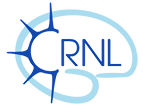The main scientific objectives of the SLEEP team are
- to characterize the two sleep states (slow wave and paradoxical / REM sleep) and to identify the neuronal networks generating and regulating them
- to study the cortical and subcortical neuronal activity during both sleep states to determine their respective involvement in learning / memory consolidation and sensory integration
- to identify the abnormal processes underlying two deleterious neurodegenerative sleep pathologies, narcolepsy (autoimmune) and REM sleep Behavior Disorder (RBD, a prodromic biomarker of alpha-synucleinopathies as Parkinson’s disease)
For more information : https://lyonsleeplab.cnrs.fr/
To reach our objectives, we develop a multidisciplinary approach combining
Polysomnography (EEG, EMG, EOG), local field potential (LFP) recordings, behavioral monitoring, functional neuroanatomy, intra and extra-cellular unit recordings, local pharmacology, opto- and chemogenetics, multiunit multisite recordings, transgenic mice and rats, transcriptomics, biologging.
Our research projects aim
- to progress in the identification of the neurons controlling/generating sleep states
- to unravel the physiopathology of narcolepsy and RBD by developing preclinical models in rodents
- to study the function of paradoxical sleep with the hypothesis that it plays a role in learning and memory, in setting up new behavioral strategies and in regulating mood and emotion
- to investigate the efficiency of sensory information transfer from the periphery to the cerebral cortex during paradoxical sleep, using the anatomically well-defined murine whisker somatosensory system as a model
- to determine how sleep states evolved by studying their phenotypic adaptation across key species, chosen because of their specific phylogenetic position, ecology or physiology
Our projects are multidisciplinary, translational and integrative. They are well integrated in the scientific interests of the CRNL addressing fundamental questions as well as key public health questions.
Sleep, REM sleep, wakefulness, somato-sensory system, thalamus, memory, learning, narcolepsy, neuro-inflammation, RBD, Parkinson’s disease, alpha-synuclein, animal models of sleep disorders
P Fort, P-H Luppi, C Peyron, N Urbain, P-A Libourel
patrice.fort@univ-lyon1.fr ; luppi@univ-lyon1.fr ; christelle.peyron@univ-lyon1.fr ; nadia.urbain@inserm.fr ; pa.libourel@univ-lyon1.fr











